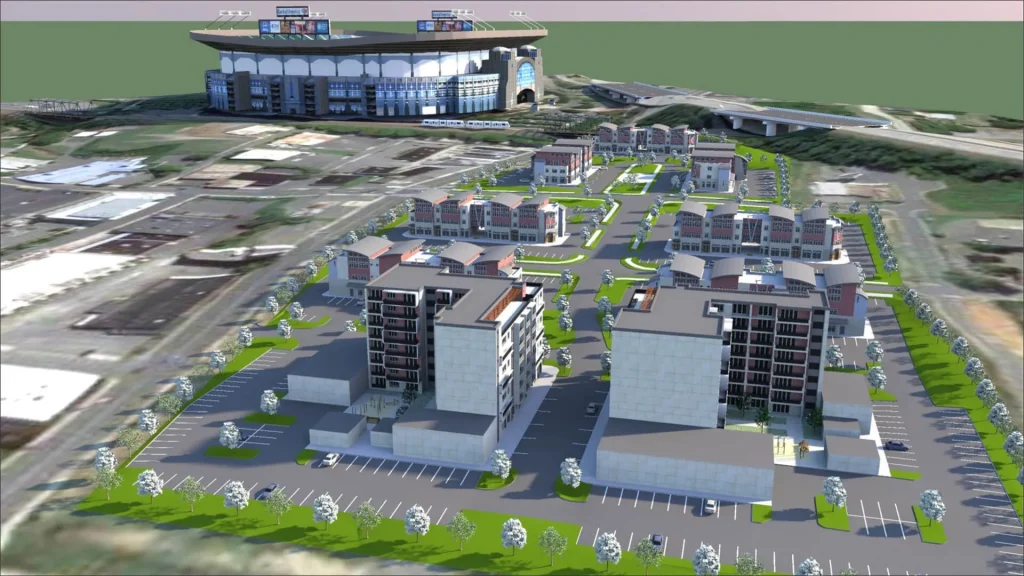In the rapidly evolving landscape of construction and engineering, Building Information Modeling (BIM) has emerged as a transformative technology, revolutionizing the way infrastructure projects are planned, designed, and executed. With its ability to create digital representations of physical and functional characteristics of buildings and infrastructure, BIM has become an indispensable tool for stakeholders across the construction industry. In this official blog, we explore the pivotal role of BIM services in infrastructure projects, highlighting its benefits, applications, and the future of digital construction.
Introduction to BIM Services
BIM services encompass a range of processes and technologies aimed at creating, managing, and exchanging digital representations of Infrastructure BIM Services assets throughout their lifecycle. From initial conceptualization to construction and maintenance, BIM services facilitate collaboration, improve decision-making, and optimize project outcomes.
Benefits of BIM Services in Infrastructure Projects
Improved Visualization: BIM services enable stakeholders to visualize infrastructure projects in a 3D digital environment, providing a clear understanding of spatial relationships, design intent, and construction sequencing. This enhanced visualization capability promotes better communication and decision-making among project teams.
Enhanced Coordination: With BIM services, architects, engineers, and contractors can collaborate more effectively, coordinating design changes and resolving conflicts in real-time. This collaborative approach minimizes errors, reduces rework, and streamlines project delivery.
Optimized Design: BIM services facilitate iterative design processes, allowing project teams to explore multiple design alternatives and evaluate their impact on cost, performance, and sustainability. By analyzing design options in a virtual environment, stakeholders can make informed decisions that optimize project outcomes.
Clash Detection and Resolution: BIM services include clash detection tools that identify conflicts between different building systems, such as structural, architectural, and MEP components. By detecting clashes early in the design phase, project teams can proactively resolve issues before they escalate, minimizing costly delays and rework during construction.
Quantification and Cost Estimation: BIM services enable accurate quantification of materials and components, facilitating more reliable cost estimation and budgeting. By integrating cost data with BIM models, project teams can track project costs in real-time and make informed decisions to control project expenses.
Improved Construction Planning: BIM services support construction planning and sequencing by providing detailed construction phasing, logistics planning, and resource allocation. By simulating construction activities in a virtual environment, project teams can optimize workflows, improve site safety, and minimize construction conflicts.
Applications of BIM Services in Infrastructure Projects
Roads and Highways: BIM services are used to design, visualize, and analyze road and highway infrastructure, including alignments, intersections, and drainage systems. By incorporating geographic information systems (GIS) data and terrain modeling, BIM services enable accurate terrain analysis and site grading for road construction projects.
Bridges and Structures: BIM services are employed in the design and analysis of bridges, tunnels, and other civil structures, enabling engineers to optimize structural performance, minimize material usage, and enhance safety. By simulating structural behavior under different loading conditions, BIM services support structural analysis, design validation, and code compliance.
Rail and Transit: BIM services are utilized in the planning, design, and construction of rail and transit infrastructure, including rail lines, stations, and signaling systems. By integrating BIM models with geographic information systems (GIS) and asset management systems, BIM services enable comprehensive asset lifecycle management for rail and transit projects.
Utilities and Infrastructure Networks: BIM services support the design and management of utility networks, including water, sewer, and electrical systems. By creating digital twins of utility assets, BIM services enable utilities to visualize, analyze, and optimize infrastructure performance, improving reliability, efficiency, and resilience.
Environmental and Sustainability Analysis: BIM services facilitate environmental and sustainability analysis for infrastructure projects, enabling engineers to evaluate the environmental impact of design alternatives and optimize resource usage. By integrating energy modeling, daylighting analysis, and life cycle assessment (LCA) tools, BIM services support sustainable design decision-making and compliance with green building standards.
Future Directions and Innovations
As technology continues to evolve, the role of BIM services in Infrastructure BIM Services projects is expected to expand, driving innovation and transformation across the construction industry. Key trends and innovations in BIM services include:
Cloud-Based Collaboration: The adoption of cloud-based BIM platforms enables real-time collaboration and data sharing among project stakeholders, regardless of their location or time zone. Cloud-based BIM services facilitate seamless communication, document management, and version control, improving project efficiency and team productivity.
Integration with IoT and Sensor Technology: BIM services are increasingly integrated with Internet of Things (IoT) devices and sensor technology, enabling real-time monitoring and control of infrastructure assets. By collecting and analyzing data from sensors embedded in buildings and infrastructure, BIM services support predictive maintenance, performance optimization, and asset management.
Virtual and Augmented Reality: The use of virtual reality (VR) and augmented reality (AR) technologies enhances the visualization and communication of infrastructure projects. By immersing stakeholders in virtual environments, VR and AR-based BIM services enable interactive design reviews, virtual site visits, and immersive training simulations, improving stakeholder engagement and understanding.
Artificial Intelligence and Machine Learning: BIM services leverage artificial intelligence (AI) and machine learning (ML) algorithms to automate repetitive tasks, analyze complex data sets, and generate design insights. AI and ML-based BIM services support automated design optimization, generative design, and predictive analytics, accelerating decision-making and innovation in infrastructure projects.
Conclusion
BIM services play a critical role in the planning, design, and construction of Infrastructure BIM Services projects, enabling stakeholders to visualize, analyze, and optimize project outcomes. ENGISOFT ENGINEERING – BIM Staffing & BIM Services From improved visualization and coordination to enhanced design optimization and sustainability analysis, BIM services offer a wide range of benefits that drive efficiency, collaboration, and innovation across the construction industry. As technology continues to advance, the role of BIM services in infrastructure projects will continue to evolve, shaping the future of digital construction and transforming the way we build and manage infrastructure for generations to come.

